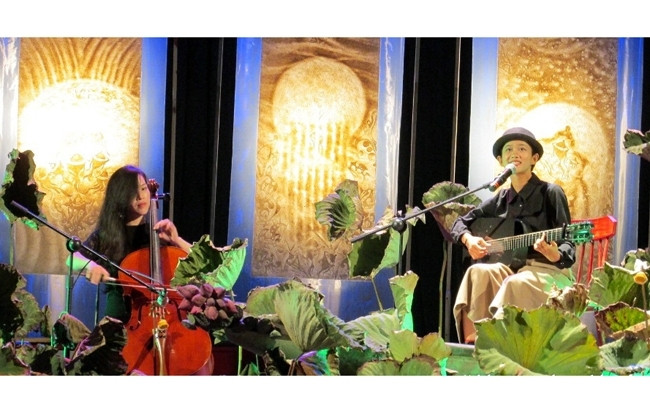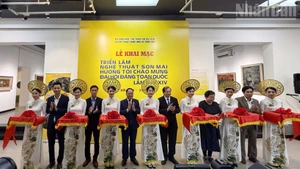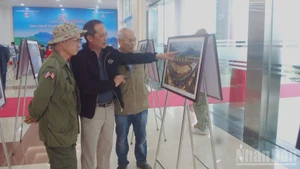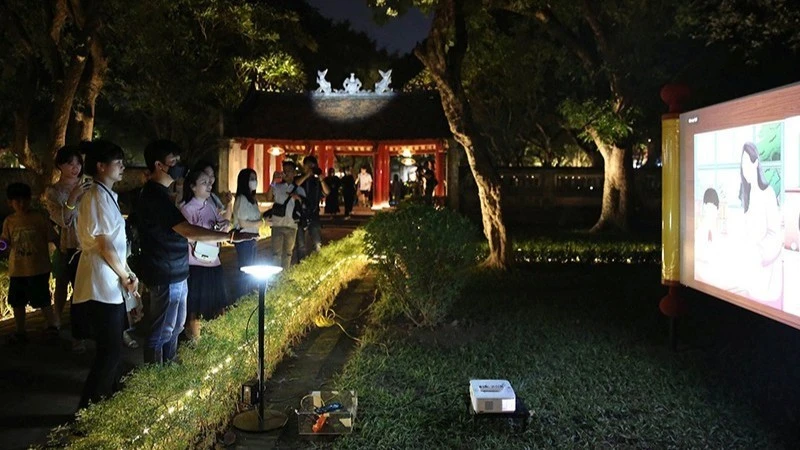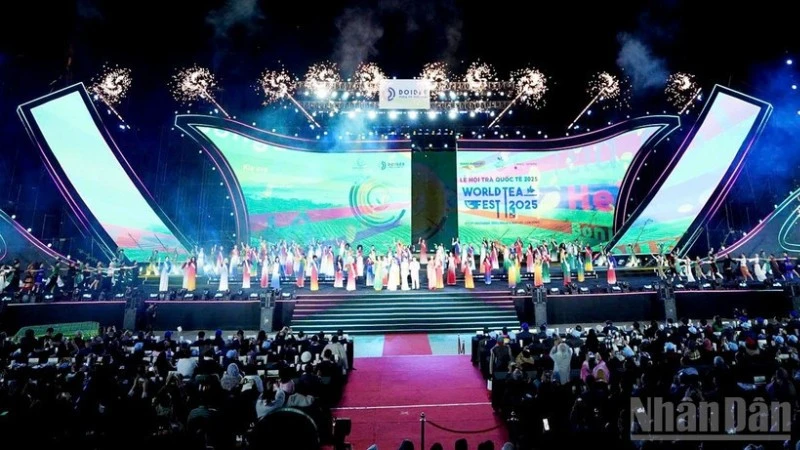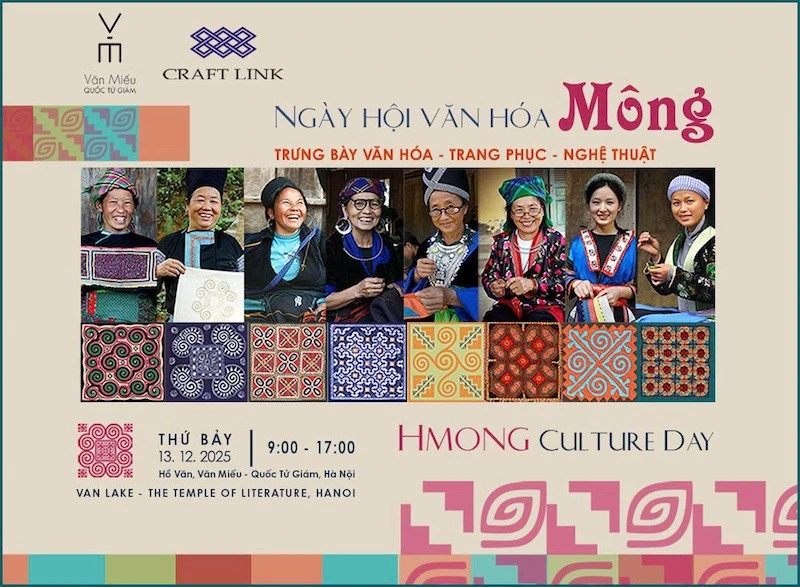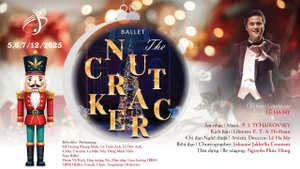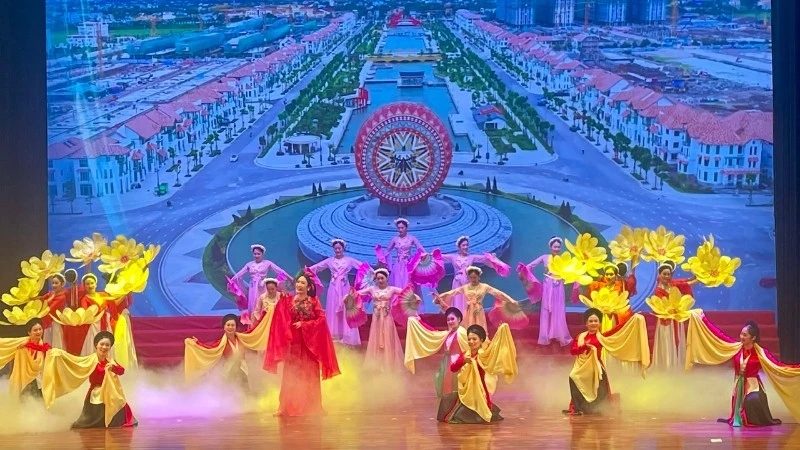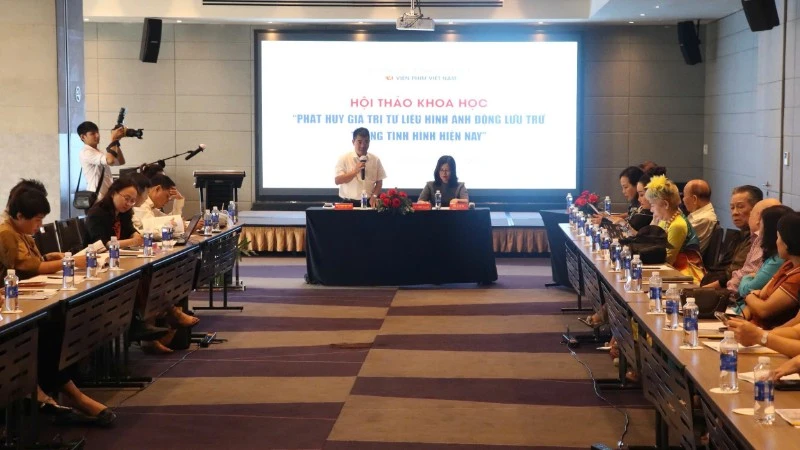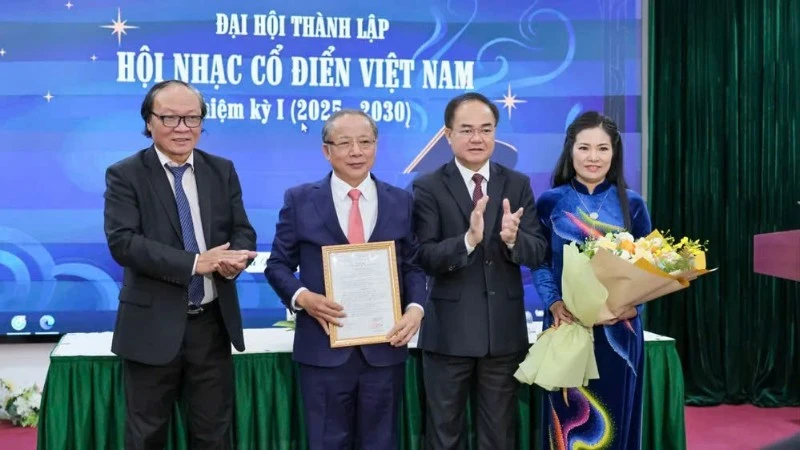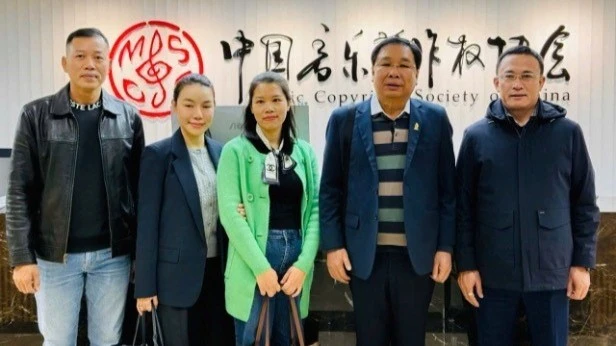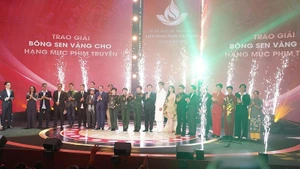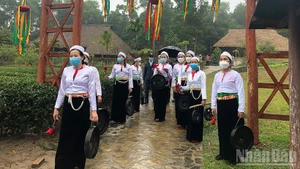The Truc chi art project is the result of the independent research conducted by painter Phan Hai Bang since 2000. Truc chi was named by writer and translator Buu Y in April 2012, highlighting bamboo as one of the symbols of Vietnamese culture and spirit. Accordingly, Truc chi is understood as a kind of paper art form in Vietnam, not just to be a "bamboo paper" as common understanding, being similar to washi of Japanese people and hanji from the Republic of Korea.
In Truc chi arts, paper is not merely a "background" for writing, drawing or printing, but it can become a self-contained and independent art work and play a role as a major component of the work.
Truc chi’s remarkable characteristics are the flexibility in expression thanks to the combination of many kinds of fiber, and the subtle tone values conformable to the thick and thin layers according to trucchigraphy, especially as the art works interactwith light. Truc chi works can be felt at the surface effect and the light-shining effect of reverse light.
The creation of a Truc chi work includes two main stages. Firstly, the papers are made like other traditional kinds. Accordingly, raw materials are soaked, cooked with lime and pounded into pulps that are pumped into a frame to form papers. The second phase use important techniques called trucchigraphy. This term was formed thanks to the application of various elements: traditional craft paper making process,water pressure making technique which is quite popular in some countries, and the principles of graphic arts/printmaking including etching and seriegraphy.
Right on a wet paper, the painter uses a water pressure cock to change the fiber structure with the sketched lanterns as outlines. This manipulation is carried out many times according to the principles of the etching and seriegraphy techniques. In addition, the painters can use the cock as a special ‘brush’ for painting on the wet papers, creating a characteristic magic effect.

Painter Phan Hai Bang
Phan Hai Bang shared that the application of water pressure creation techniques under the principles of graphic arts, with a notion of creating a self-contained paper art work. These techniques are at the core that make the difference and unique feature of Truc chi.
Truc chi can fully meet the diverse and special requirements of applied arts in various types such as the design of interior and exterior products, costumes, jewelry. In the spirit of building a new value through the exploitation of the traditional background, along with contemporary thinking and consciousness, Phan Hai Bang and his partners have combined Truc chi arts with other traditional crafts to create productsimbued with national cultural identities.
This form not only brings the novelty to handicraft products but also contributes to connecting trade villages together, towards the strong development. Many products made from brightly coloured Truc chi, such as wallets, jewelry boxes, fans, notebooks and umbrellas, lights, parallel sentences and tea tables, have been gradually popular in different regions in the country and abroad.
Phan Hai Bang has been famous for many outstanding Truc chi art works in the country and abroad, particularly the work titled ‘Vong niem’ (Vain hopes) and ‘Thuyen’ (Boats) in the tunnel of the Vietnamese National Assembly House and various art projects at museums in France and Germany.
He also won many national and international prizes in the fields of visual and applied arts, including the awards from the Vietnam Fine Arts Association and the Vietnam Union of Literature and Arts Associations, the Vietnam – Asia Arts Awards and Phillip Morris Corp Awards. Particularly, Truc chi products were selected as valuable souvenirs to the Japanese King and Queen during their visit to the ancient capital city of Hue in 2017. Despite success in bringing Truc chi arts closer to the public, Hai Bang only considers himself as a person connecting the traditional and modern values together with the mind of acreator to create a new value on the traditional background.
